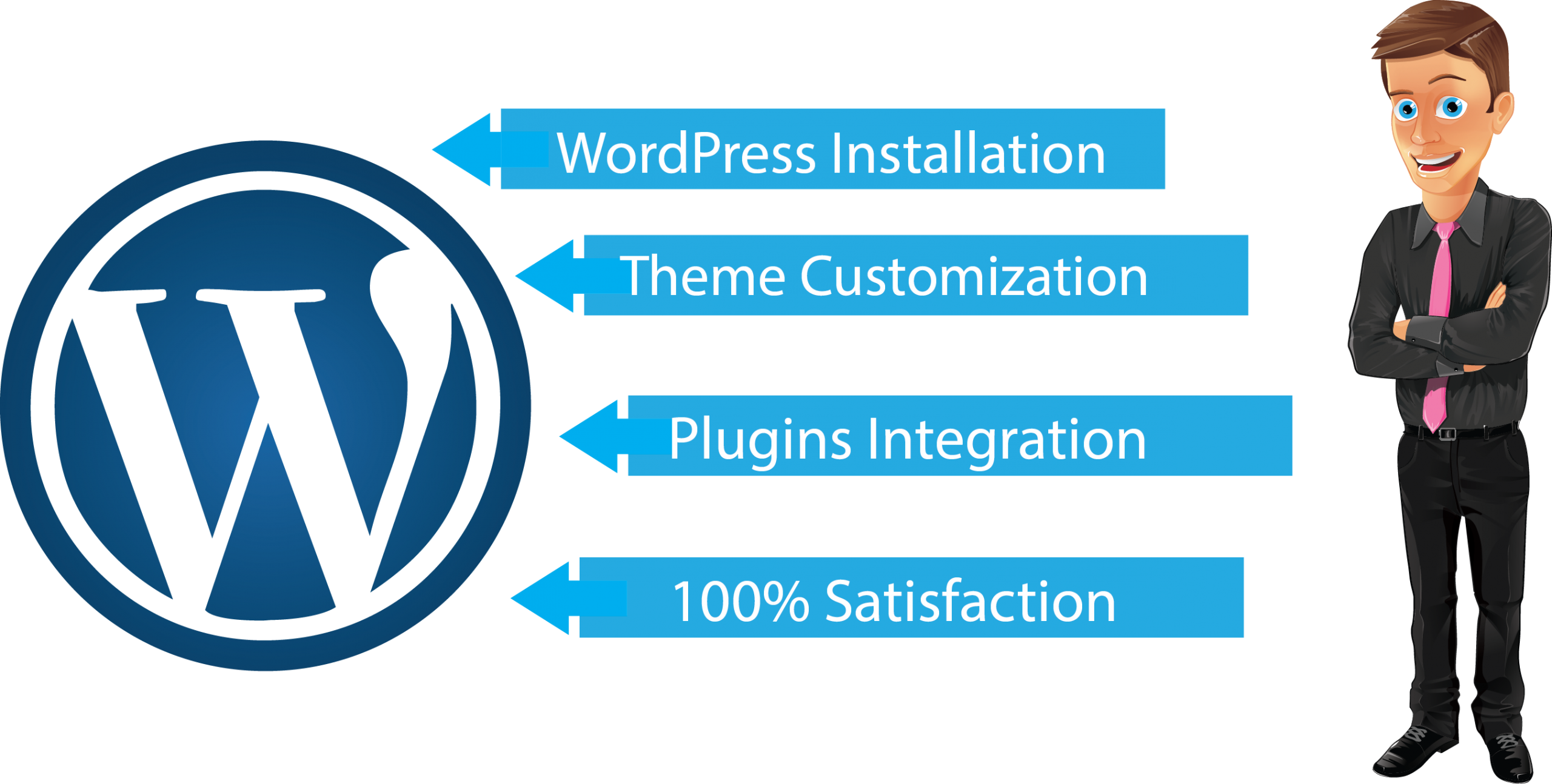What Is WordPress?
WordPress is the world’s most famous substance the board framework, which runs 35% of the whole web and powers large numbers of the sites you probably peruse each and every day, including BBC America, Time.com, and TechCrunch. Indeed, even The Rolling Stones use WordPress for their authority site. Assuming it works for these worldwide goliaths, you can see the reason why it’s the go-to for some site engineers.
WordPress began as publishing content to a blog stage in 2003 however immediately turned to turn into an amazing and adaptable answer for running whole sites, and in 2020, it is additionally fit for being utilized as an eCommerce arrangement.
However, for what reason did WordPress become so famous?
For some, it is on the grounds that:
It s basic and simple to utilize. You don’t should be an engineer to dispatch a WordPress site, and it is amazingly easy to understand, in any event, for fledglings.
It is adaptable and versatile. With in a real sense large number of subjects accessible (counting many free choices), you can fit WordPress to your necessities, while additionally expanding the center usefulness with one of more than 55,000 modules accessible. The stage can likewise have completely tailor made topics, in case you are an accomplished PHP engineer, need to gain proficiency with the language or decide to utilize the administrations of an expert to transform a specially craft into a stand-apart site.
There is a stunning local area. WordPress is open-source, and the local area behind the stage is absolutely stunning. From help gatherings to simple to-follow documentation, there is consistently help close by, notwithstanding how basic or complex the issue might be.
Obviously, it isn’t the right stage for everybody, and there are times when there might be different CMS choices that are more qualified to your singular requirements. Ordinarily refered to drawbacks and cons of WordPress generally identify with the requirement for regular updates, possible weaknesses (on the off chance that you are not keeping your site refreshed), and a smidgen of an expectation to learn and adapt to dispatch tailor made topics. However, for the most, it is a very amazing stage and one which likewise gives you incredible establishments for SEO achievement.
What Is WordPress SEO?
WordPress on its own isn’t a substitution for a strong SEO system, and keeping in mind that there is no rejecting that the CMS saves you time and assists you with sticking to best practices without experience, you want to comprehend that you want to invest the energy to rank your site on Google.
Your selection of CMS doesn’t direct whether or not you can rank well except if your site experiences broad specialized issues that prevent it from being slithered and recorded. You shouldn’t feel that WordPress is an enchanted weapon minus any additional work; it requires time and exertion. Website design enhancement can get specialized rapidly, however the magnificence of WordPress makes it effectively available to the people who aren’t capable or even the individuals who don’t class themselves as being specialized.
Since you are utilizing WordPress doesn’t mean the SEO strategies you use will change. You actually need to make incredible substance, procure extraordinary connections, and guarantee that your site is all around streamlined and liberated from specialized issues that could keep it down. Be that as it may, WordPress assists you with dealing with, out of the case, a large number of the fundamentals which assist your site with positioning, and what you will find beneath are tips and deceives which assist you with executing development driving strategies explicitly on the stage. Beginning: WordPress SEO Basics
Before you figure out how to appropriately streamline your WordPress site and begin to expand your natural traffic, there are a couple of fundamentals that you want to ensure you have covered to be sure that you are working with a strong form.
1. Pick a Reliable Hosting Provider
You really want to ensure you are facilitating your site with a dependable supplier — site speed, uptime, and security are altogether key motivations to consider cautiously regarding who you will use as your host.
Site speed straightforwardly affects your WordPress site’s SEO execution, and both helpless uptime and security weaknesses can bring about site quality issues. Try not to be enticed to go for the least expensive choice, as you are bound to experience the ill effects of execution issues.
WordPress themselves suggest three facilitating suppliers, and it’s a good idea to think about these choices assuming you don’t know where to begin.
2. Introduce a SEO-accommodating WordPress Theme
At the point when you initially introduce WordPress, you will in all likelihood see the stage’s default ‘Twenty’ topic. Be that as it may, odds are this isn’t one you will need to use for your site.
There are in a real sense large number of free topics accessible directly from the dashboard and a lot more superior subjects, you really want to pick cautiously, or you could wind up utilizing one which isn’t SEO well disposed.
While many subjects guarantee to be SEO-accommodating, it isn’t exceptional for topics to come packaged with scripts and modules that you won’t utilize, and that will dial your site’s presentation back. Prior to introducing a subject, run its demo through Google’s web.dev apparatus to get bits of knowledge on likely execution and SEO issues.
Estimating SEO best practices
This ought to at minimum give you the certainty that you are picking a topic that won’t keep you down.
3. Introduce a Free WordPress SEO Plugin
Before you start to enhance your site, you really want to introduce a SEO module. Fortunately, there are several primary choices which come generally suggested, the two of which are allowed to introduce:
Yoast SEO
Across the board SEO Pack
With the end goal of this aide, we will utilize Yoast, yet investigate our best WordPress modules for SEO guide for both free and paid choices.
Kindly note, a module will not upgrade your site for you; it simply makes it more straightforward for you to do as such and to cling to best practices.
One method for introducing a module on WordPress is to sign in to the administrator board and explore to the ‘add new’ module page down the left-hand menu: Plugins > Add new
When you are there, look for the module which you need to introduce and hit ‘introduce now.’
Whenever it is introduced, you really want to enact the module. We will introduce extra modules as we work through our top WordPress SEO tips. To see alternate ways of introducing a WP module, visit this aide.
4. Set Your Preferred Domain
Regardless of whether you pick your favored area as https://domain.com or https://www.domain.com will not affect your SEO, however you really want to ensure your site is open on only one of these, as these are considered by Google to be various URLs.
Head to: Settings > General. Here you can pick your favored area:
The other space form will then, at that point, be diverted to your favored area. Assuming you are dispatching another site, go ahead and pick either choice, however in case you are supplanting a current site, make certain to utilize a similar variant you have generally utilized.
As a side note to this, you really want to ensure you have a SSL testament set up and run your site use HTTPS. In the event that you haven’t got an endorsement introduced, talk with your facilitating supplier or designer or investigate the free Let’s Encrypt arrangement. You can figure out how to set up with WordPress here.
5. Really look at Your Site’s Visibility Settings
WordPress enables you to ‘debilitate web crawlers from ordering’ your webpage, which basically implies it won’t rank. This is regularly utilized by engineers while a site is being developed to prevent it from being ordered while pages and content are not finished.
It is more normal than you would might suspect to observe that this square is left set up after dispatch. You want to really take a look at your site’s perceivability settings under: Settings > Reading.
Here, you will see a checkbox right at the lower part of the page:
web index perceivability checkbox for WordPress SEO
Assuming this case is ticked, you really want to untick it.
6. Empower SEO Friendly Permalinks
WordPress provides you with various choices for how URLs are organized, and you want to ensure you are utilizing the most SEO-accommodating choice.
Of course, WordPress utilizes URLs like this:https://domain.com/?p=123. These URLs are not web index cordial, and it is basically impossible to try and start to distinguish what’s going on with the page from the URL alone.
Fortunately, you can pick a custom URL structure at: Settings > Permalinks
For most destinations, you will need to pick ‘Post name’ for your permalinks.
7. Check Your Site with Google Search Console and Submit Your XML Sitemap
On the off chance that you’ve not recently done as such, you’ll need to check your site with Google Search Console. Assuming you have never done this, you can figure out how to do as such in our authoritative manual for Google Search Console.
Follow the confirmation steps recorded and pick the ‘HTML tag’ technique. From that point, get around to the Yoast module: SEO > General > Webmaster Tools.


